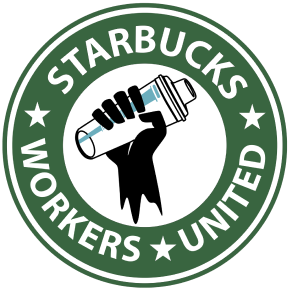Solidarity, organization, and mobilization are the foundational themes necessary for any push towards change in your workplace. Tools such as leader identification, workplace mapping, structured conversations with co-workers, and planning for eventual boss confrontation can illuminate safety in numbers and empower democratic leadership to emerge. However, if you work in the public sector, you will face some unique challenges and therefore prompted towards creative solutions.
History of Organizing in the Public Sector
The labor movement is no stranger to the public sector. There is a rich history of bottom-up power in the early 20th century of workers organizing with absolutely no rights at all. These “unorganized” temporary public-sector jobs were created by Roosevelt’s New Deal “welfare capitalism.” Not only did these workers mobilize, they actually won a number of concessions such as shorter work weeks. They did this through militant action on the job and a lens of expanding justice in the wider society. They deepened community bonds, transcending the demarcations that the federal government and big business worked so diligently to uphold. As this new century unfolds, workers are fighting for a return to the economic prosperity brought about by the New Deal–era’s trade union prevalence. This time, though, without the insidious sexism and racism prevalent alongside neoliberalism’s covert infiltration on the global scale.
Our pre–Cold War, public-sector ancestors knew how to unionize. As legends of solidarity and mobilization, they dance alongside us today. It is in their spirit of liberation that we navigate a future wrought with federal distaste for labor power and a cathartic need to satiate corporate bankrollers. Our past and theirs coalesce as legislation and lobbyists work to enforce anti-progressive rhetoric on a McCarthyist policy level. (This is ironic, as progressive actions such as the New Deal and the 2008 automotive bailouts have actually saved capital’s longevity.) Our rights are not enshrined in stone. The struggle for liberation continues even as the Supreme Court and our local governing authorities waffle between stakeholder interests.
Modern Labor Rulings
The 1977 U.S. Supreme Court ruling, Abood vs. Detroit Board of Education, set a precedent. Public-sector unions could collect agency fees to support non-political activities, such as collective bargaining efforts and administrative work. They reasoned that non-union workers benefit from the activities of the union, like high pay scales, healthcare, and even job security. This ruling excluded explicit political activity from the non-union member funding, meaning only member dues would be reserved for canvassing, campaigns, and candidate endorsements.
On one hand, this decision increased labor power because advocacy needs cash to be sustainable. Lawyer fees and strike organizing are essential to the collective bargaining process. But this also gave rise to business unionism, as opposed the previous tendency towards class-struggle unionism. This made our organizations more bureaucratic and much less credible.
Later on, the court ruled in Janus v. American Federation of State, County and Municipal Employees (also known as “Janus”). This ruling stated that unions “may no longer extract agency fees from nonconsenting employees.” The 5–4 decision allows employees who benefit from the collective bargaining efforts of the union to side-step the labor and administrative costs necessary to apprehend improved conditions.
The Aftermath of Janus
At the time, the Illinois Economic Policy Institute projected that this decision would decrease public-sector wages by up to 5%. Five years later, we are watching the persistent stratification of classes. Meanwhile, we navigate a rolling recession endemic to late-stage capitalist accumulation.
In the face of this massive bummer, revolutionary optimism is necessary. Labor must increase worker power and topple the existing paradigm. The National Labor Relations Board (NLRB) governs the rights of workers in the private sector, but public-sector workers are subject to state and local authorities. This means navigating a combination of ever-shifting legislation and case law to determine a viable path to unionizing a workplace.
Names like the United Public Workers of America (UPWA) remind public-sector workers that this future is one we can change. These “wall-to-wall” bargains are reminiscent of the First Amendment, granting us freedom of assembly, and the right of association. A union, at its core, is just a group of people organizing together.
The “Wall-to-Wall” Method
“Wall-to-wall” organizing, which grew out of organizing in the 1940s, is an attempt to organize every worker in a workplace, regardless of their job. Organizers seek to actively empower bargaining units, especially within university and school systems, without exclusion of any staff within the sector. It also helps unify a wide array of worker bases and increases bargaining power through higher pay and better benefits.
This horizontal organizing tactic has also helped to shift cultural assumptions of some positions as being more valuable than others. Organizers connect janitors and landscapers with graduate teaching assistants and Ph. D. candidates. The United Campus Workers (UCW) refuse to wait for legislation to enact a unified university domain. UCW identified both a need and an urgency. They grew by 2,960 members in the first two years of the COVID-19 pandemic.
This push for recognition, respect, and pay intensifies in periods of crisis. Meanwhile, bosses force workers to recognize their own mortality alongside their inherent dignity. As inflation mounts, wages stagnate, and rents skyrocket, so too does the anger of the masses. Anger is amplified with the reality that we are dependent upon our employer, one firing away from abject poverty. Luckily, we can transform this anger into fuel for organizing and mobilization of effective resistance. Welcome to Red Hot Summer.
How We Can Still Win
Bosses and elected officials have stripped collective bargaining under the guise of “right-to-work” states. Even in the face of bureaucratic greed and policy obscurity, public-sector workers still have proven tools in our arsenal. Workers can conduct petitions, hold teach-ins, and educate co-workers and the public on their rights. For example, consider the West Virginia’s public-school worker strikes in 2018 and 2019 following the Janus decision.
Unions such as the American Federation of Teachers and the National Education Association represent teachers, bus drivers, janitors, and other workers in West Virginia, but they do not have collective bargaining rights. Despite this, these workers banded together to shut down every public school statewide and flood the state capitol building with protestors.
Even without the legal backing to do so, their strike engaged community members in the struggle. This made it impossible to ignore their power. Even though less than 10% of the American workforce is unionized, public opinion of strikes, unions, and collective action is changing.
Red Hot Summer hearkens labor ancestors, gives us a framework to organize, and illuminates the need for unions within all sectors, even public. If you’re reading this article and wondering about your workplace’s readiness, you are already in an excellent position.
Start chatting with that new co-worker, eat lunch with many different colleagues, and be the kind of neighbor who cares about the person in the cubicle, bus, or classroom right beside yours. Unity is our biggest ally. And if you don’t know where to start, the Emergency Workplace Organizing Committee and the rest of the working class has your back. Workers of the union’s past have enshrined your rights. Their struggle is our struggle. When in doubt, act like a union and become one.




